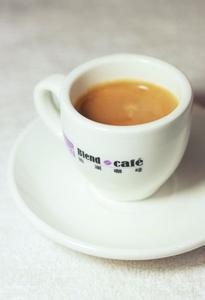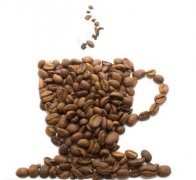The origin of the name espresso

"Espresso" means Italian espresso. Espresso is Latin for "under pressure" and Italian for "fast." Italians invented the first espresso machine in the 19th century. It is characterized by the use of steam pressure, in high temperature, high pressure instant coffee extraction. Espresso is extracted from a precise blend of coffee beans. It is a strong, fragrant, pure black coffee with a layer of golden foam floating on the surface. Espresso has a unique consistency.
Rich taste, give people endless aftertaste. On the surface of the coffee will appear brownish red, fine, dense "crema"(cream), which is also the essence of this coffee. All coffee with milk or fancy coffee is based on Espresso. So Espresso is the key to testing the quality of a cup of coffee.
2 What is "Espresso"?
"Espresso" is a comprehensive coffee bean deeply roasted at 7 grams, ground into a very fine coffee powder, and after 9 atmospheres and 90 degrees Celsius of high temperature steam, 30 ml of strong coffee liquid is rapidly extracted in a short time of 20 seconds. The most important thing about a successful Espresso is to see if there is a thick layer of brownish red oily foam floating on the surface: Cream Krima.
3,"Espresso" is the biggest feature of the aroma and taste of the condensation, the general orthodox drinking method is to add sugar, slightly stir, immediately drink. While enjoying the rich taste, caffeine intake is greatly reduced. This kind of coffee taste to the extreme but can take into account the health of the drinking method, so that the world's coffee experts recognized that "Espresso" is worthy of the soul of coffee.
Espresso coffee is not only composed of a single coffee bean, because of the role of high-pressure hot water, it is easy to highlight the characteristics of a single coffee bean, and produce an uneven taste of Espresso. Espresso is made from a variety of coffee beans from all over the world. Many coffee roasters also carefully develop recipes that represent their own companies in order to blend their own brand of coffee beans that are popular with the public.
5 Origin of the name
Macchiato means "marked, spotted" in Italian. She compromised Espresso and Cappuccino, enjoying smooth, creamy foam while drinking rich Espresso.
Cappuccino Cappuccino gets its name because the foam cap on Cappuccino resembles the cap on the cape worn by Catholic Cappuccino priests. Mixing Espresso, Milk, and Foam in proportion makes Cappuccino less bitter than Espresso and more mellow than Foamy, which gives Cappuccino a more acceptable taste.
Latte means milk in Italian. The difference from Cappuccino is that Latte has a stronger milk fragrance. A large amount of milk and milk foam fully blend the heavy taste of Espresso, making it taste docile. It can be used as the first choice for coffee drinkers.
The famous Latte Macchiato, also made from Espresso, milk and foam, Latte Macchiato is coffee added to a large cup of hot milk.Macchiato means dirty. Latte Macchiato is made by adding black coffee to white milk, meaning that the milk is contaminated with coffee.
Mocha means chocolate in Italian, and Café Mocha naturally means chocolate coffee. When mellow coffee, rich milk and sweet chocolate are perfectly combined, no one can resist her seductive charm.
Important Notice :
前街咖啡 FrontStreet Coffee has moved to new addredd:
FrontStreet Coffee Address: 315,Donghua East Road,GuangZhou
Tel:020 38364473
- Prev

Coffee trees usually grow in the area between the Tropic of Cancer and the Tropic of Cancer
Coffee trees are very similar to laurel and usually grow between the Tropic of Cancer and the Tropic of Cancer. A coffee tree usually grows for about three to four years before it begins to bear fruit. The fruit is a red berry, which is dried and the pulp is removed to separate the coffee beans. There are shadows of coffee beans all over the world, and they can grow as usual as long as the climate is right. These are suitable for cultivating coffee.
- Next

Why can you feel a little sweetness when tasting black coffee?
Most people only taste bitter, sour and astringent coffee. In fact, raw coffee beans contain about 50.8% sugar. After baking at high temperature, most of the sugar will be converted into caramel. This caramel effect brings a unique tea brown to the coffee, forming a source of aroma and bitterness, while the remaining sugar leaves some sweetness. In addition, when roasting high-quality coffee beans,
Related
- Beginners will see the "Coffee pull flower" guide!
- What is the difference between ice blog purified milk and ordinary milk coffee?
- Why is the Philippines the largest producer of crops in Liberia?
- For coffee extraction, should the fine powder be retained?
- How does extracted espresso fill pressed powder? How much strength does it take to press the powder?
- How to make jasmine cold extract coffee? Is the jasmine + latte good?
- Will this little toy really make the coffee taste better? How does Lily Drip affect coffee extraction?
- Will the action of slapping the filter cup also affect coffee extraction?
- What's the difference between powder-to-water ratio and powder-to-liquid ratio?
- What is the Ethiopian local species? What does it have to do with Heirloom native species?

